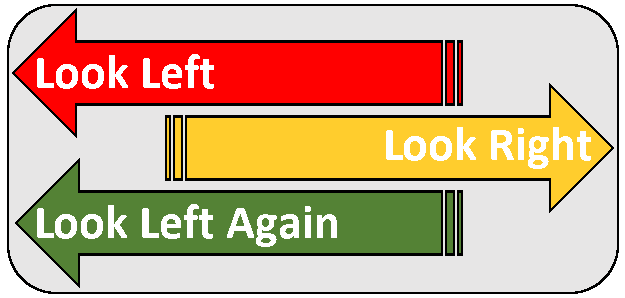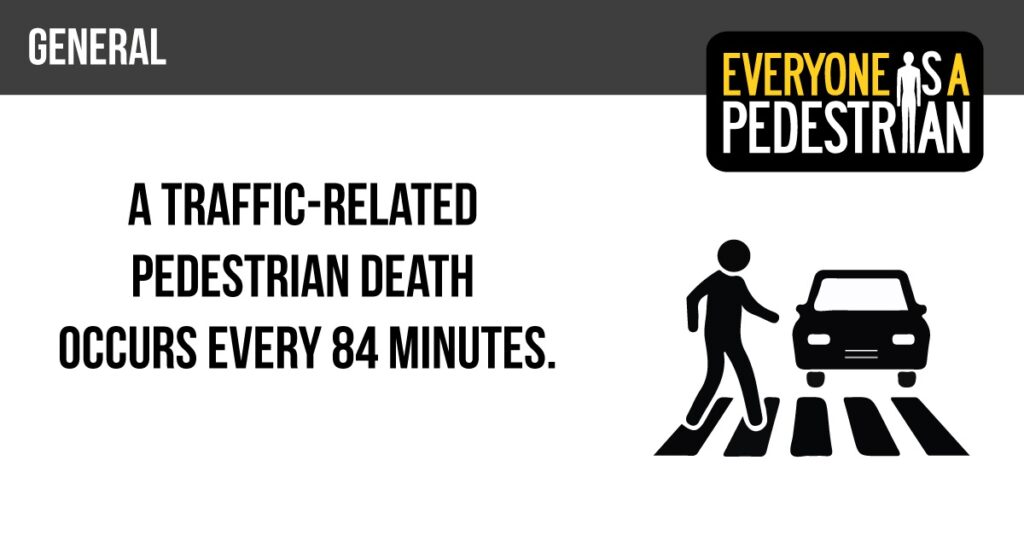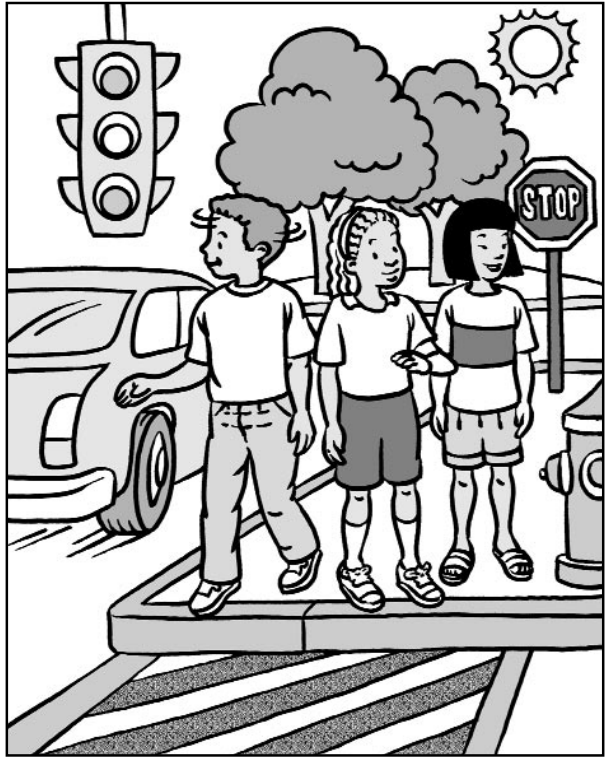Supervise Young Children Near Traffic
Teach children safe pedestrian behavior and supervise them when they are near moving vehicles. Walk with children frequently to help them develop safe walking behaviors. Encourage children to always hold an adult’s hand when crossing the street or when walking near moving vehicles. Young children should be taught to never cross the street without the help of an adult. When dropping a child off from a vehicle, encourage them to always exit on the side of the car next to the sidewalk.

Teach by example: Young children learn from watching adults so when you cross the street with your child, always:
- Stop at the curb.
- Look Left, then Right, then Left again for traffic.
- When crossing at an intersection, look over your shoulder to look for vehicles that may be turning.
- Step into the roadway and cross when it is clear.
- Keep on looking Left, Right, Left for cars as you cross the street.
Be a positive role model: Always follow these rules of the road:
- Obey all traffic signs and signals.
- Stop, and look left, right and left again before entering a roadway.
- Never run into the street and find safe places away from traffic for your child to play.
- Always cross at the crosswalk or intersection. When crossing at an intersection, check over your shoulder for turning vehicles.
- Always walk on the sidewalk. If there are no sidewalks, pedestrians should walk facing traffic.
- Make eye contact with drivers of stopped vehicles to be sure they are aware that you are crossing the street.
10 Things to Remember
Approximately, 17% of children 14 and younger killed in traffic crashes were pedestrians. Ten things to keep in mind about children in traffic…

Ten things to keep in mind about children in traffic:
- Young children have difficulty looking for oncoming traffic due their short stature being blocked by parked cars, bushes, etc.
- Children often have difficulty telling where a sound (like a horn or siren) comes from.
- Children often lack a sense of danger.
- Children are often restless and have trouble waiting for traffic signals.
- Children have trouble understanding complex chain of events.
- Children have trouble judging speed and distance of oncoming cars.
- Children tend to only focus on things that interest them the most.
- Children often mix fantasy with reality.
- Children believe that grownups will look out for them.
- Children often imitate unsafe pedestrian behavior of their peers.
Teach Children to Cross the Street Safely

- Select a safe place to cross the street.
- Scan for Traffic – Look Left, Look Right, Look Left Again
- Parents must teach their children to scan for vehicles properly.
- Watch for cars crossing the sidewalk at driveways.
- Watch for cars turning at intersections.
- Wait for a safe distance between cars before crossing the street.
- Avoid situations where you must run across the street.
- Cross only at pedestrian cross walks or intersections.
- Identify the direction of traffic and objects that may block your ability to see traffic or for the drivers to see you.
- Will traffic be coming from both directions?
- What objects stop me from seeing possible vehicles? (i.e. hills, bushes, trees, signs, etc.)
- Children need to understand that:
- Cars may not appear to be going fast, but it is hard to judge the speed of a car from a stationary place – especially for a child.
- Vehicles cannot stop in place. It takes time for them to slow down and stop!
- Even though the child can see the car, it does not mean the driver can see the child.
